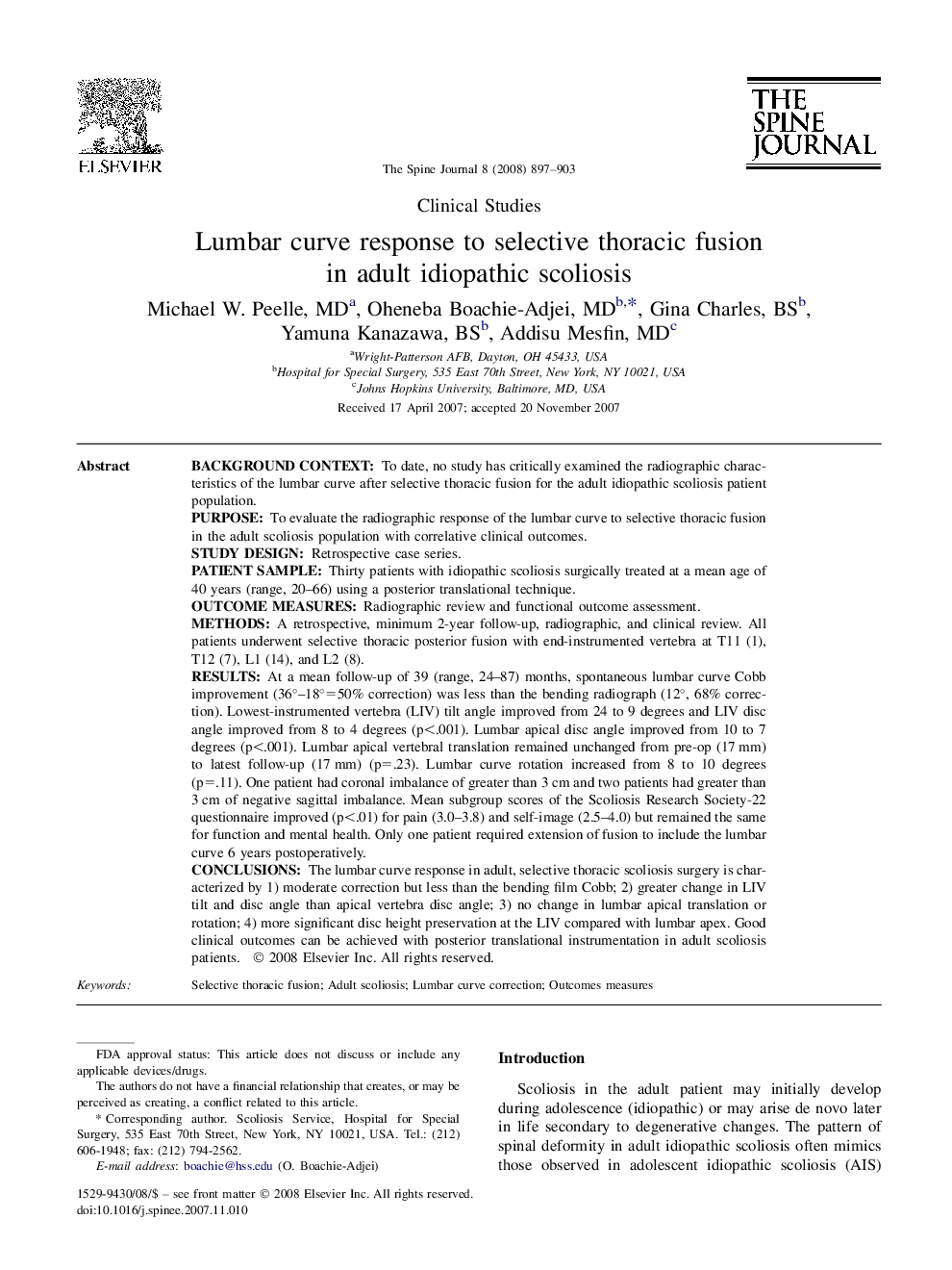| کد مقاله | کد نشریه | سال انتشار | مقاله انگلیسی | نسخه تمام متن |
|---|---|---|---|---|
| 4099814 | 1268658 | 2008 | 7 صفحه PDF | دانلود رایگان |

Background contextTo date, no study has critically examined the radiographic characteristics of the lumbar curve after selective thoracic fusion for the adult idiopathic scoliosis patient population.PurposeTo evaluate the radiographic response of the lumbar curve to selective thoracic fusion in the adult scoliosis population with correlative clinical outcomes.Study designRetrospective case series.Patient sampleThirty patients with idiopathic scoliosis surgically treated at a mean age of 40 years (range, 20–66) using a posterior translational technique.Outcome measuresRadiographic review and functional outcome assessment.MethodsA retrospective, minimum 2-year follow-up, radiographic, and clinical review. All patients underwent selective thoracic posterior fusion with end-instrumented vertebra at T11 (1), T12 (7), L1 (14), and L2 (8).ResultsAt a mean follow-up of 39 (range, 24–87) months, spontaneous lumbar curve Cobb improvement (36°–18°=50% correction) was less than the bending radiograph (12°, 68% correction). Lowest-instrumented vertebra (LIV) tilt angle improved from 24 to 9 degrees and LIV disc angle improved from 8 to 4 degrees (p<.001). Lumbar apical disc angle improved from 10 to 7 degrees (p<.001). Lumbar apical vertebral translation remained unchanged from pre-op (17 mm) to latest follow-up (17 mm) (p=.23). Lumbar curve rotation increased from 8 to 10 degrees (p=.11). One patient had coronal imbalance of greater than 3 cm and two patients had greater than 3 cm of negative sagittal imbalance. Mean subgroup scores of the Scoliosis Research Society-22 questionnaire improved (p<.01) for pain (3.0–3.8) and self-image (2.5–4.0) but remained the same for function and mental health. Only one patient required extension of fusion to include the lumbar curve 6 years postoperatively.ConclusionsThe lumbar curve response in adult, selective thoracic scoliosis surgery is characterized by 1) moderate correction but less than the bending film Cobb; 2) greater change in LIV tilt and disc angle than apical vertebra disc angle; 3) no change in lumbar apical translation or rotation; 4) more significant disc height preservation at the LIV compared with lumbar apex. Good clinical outcomes can be achieved with posterior translational instrumentation in adult scoliosis patients.
Journal: The Spine Journal - Volume 8, Issue 6, November–December 2008, Pages 897–903